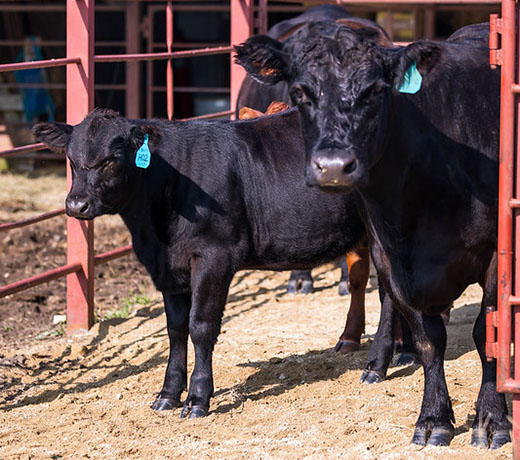
It is important that cattle have good traction under their feet when in a barn or working through a chute system. | Download this photo.
Cattle Chat: Preventing injury with good flooring
Well-designed cattle handling facilities take into account the terrain the cattle will be walking on
September 7, 2021
MANHATTAN, Kan. — When walking across a wet or icy sidewalk, people sometimes can take a tumble.
Just like humans, without solid ground to walk on, cattle can also get injured. To keep that from happening, the experts at the Kansas State University Beef Cattle Institute offered some advice during a recent Cattle Chat podcast.
“Without the right type of flooring, cattle can slip and fall when going through a handling facility and risk injury,” veterinarian Brian Lubbers said.
Lubbers recommends producers offer grooved concrete or mats for the cattle to walk on.
“The advantage of concrete is that it can be easily cleaned to aid in disease prevention,” Lubbers said. But he stressed that if the concrete is not poured correctly, it can be a risk to cattle walking across it.
“It is important that the concrete has grooves in it, but if they are too deep or too shallow, the cattle could have issues,” Lubbers said. He advised consulting with an agricultural engineer when planning the concrete design.
Along with ease of cleaning, veterinarian Bob Larson said it is also important that the flooring provides the animals stability.
“In beef operations where the cattle are not going through the handling facilities regularly, a dirt floor can work well,” Larson said. “The dirt provides the traction and because of the time delay in working cattle through the chute mud and manure is not likely to build up.”
Regardless of the flooring, it is important to design a facility that the cattle can easily move through, said the experts.
“The goal is to keep cattle from getting excited and flying out of the chute because when that happens there can be a lot of hoof erosion,” Lubbers said.
One way to reduce the erosion is to use recycled tire mats, added Lubbers.
“The mats provide traction and are easy to clean,” he said.
To hear more of this discussion, listen to the Cattle Chat podcast online.

